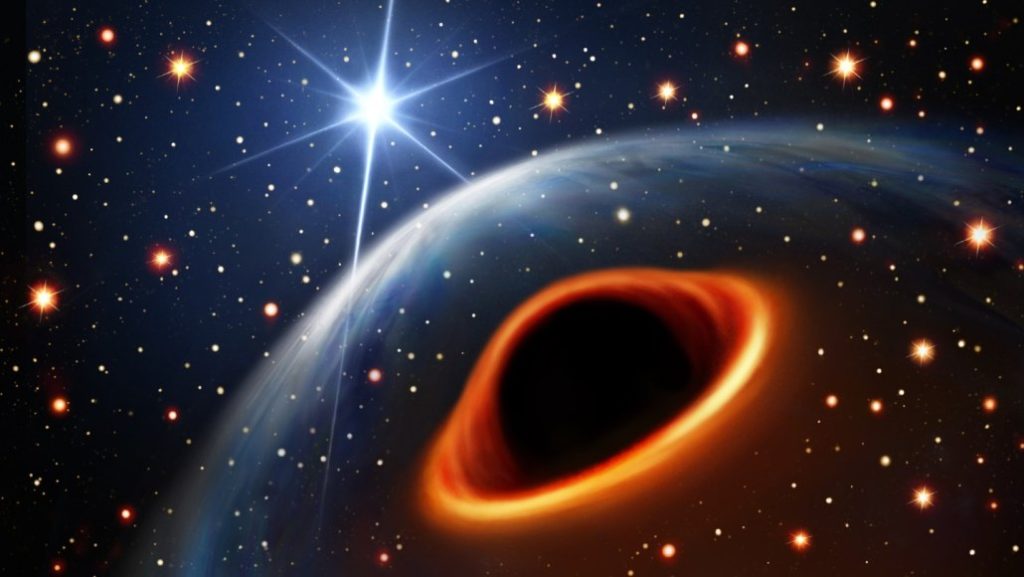Mysterious Entity Orbiting Pulsar Challenges Astrophysical Understanding

A concealed entity circling a pulsar could potentially be an extremely light black hole (depicted in illustrations), an exceedingly massive neutron star, or an entirely different phenomenon.
A recent discovery from the MeerKAT Radio Telescope in South Africa has unveiled a perplexing celestial mystery in our galaxy.
Circling around a pulsar located 40,000 light years from Earth, an enigmatic entity has left astronomers grappling with its identity – it could be a very heavy neutron star, one of the lightest black holes recorded, or an entirely novel quasi-stellar object.
The investigation focused on 13 millisecond pulsars within a dense star cluster, known for their rapid rotation, emitting beams of radiation akin to cosmic lighthouses. The MeerKAT Radio Telescope monitored the pulsars meticulously, particularly examining variations in their beams’ arrival on Earth to deduce potential perturbations in the pulsar’s motion.
One pulsar, PSR J0514−4002E, stood out as its ticks indicated the presence of an unseen companion with a mass between 2.1 and 2.7 times that of the sun. This mass range, challenging the conventional understanding of neutron stars, raises questions about the object’s nature.
The ambiguity stems from the uncertainty surrounding the dividing line between neutron stars and black holes. While neutron stars are believed to transform into black holes when reaching around two to three times the sun’s mass, the exact threshold remains elusive. Consequently, the researchers cannot definitively categorize the mysterious object.
Similar entities have been discovered before, including one identified using gravitational wave detectors in 2020. The current hypothesis suggests that the newfound object could have originated from the collision of two lighter neutron stars.
The pulsar ticks offer a unique opportunity for further exploration, as astronomers aim to unravel the hidden entity’s true nature. This endeavor not only adds to our understanding of extreme celestial objects but also provides insights into the aftermath of stellar collisions and the properties of matter under such extreme conditions.
As advancements in observational technologies continue, the study of these cosmic enigmas opens doors to probing the fundamental nature of the universe, pushing the boundaries of astrophysical knowledge. The MeerKAT Radio Telescope’s contribution in unveiling this celestial mystery underscores the importance of radio astronomy in deciphering the complexities of the cosmos.


